Akhenaten: Artistic Development in the Amarna Period
Amenhotep IV, widely recognized as the notorious Akhenaten, was the enigmatic “heretic” pharaoh who ruled during the Eighteenth Dynasty.
Maya M. Tola 10 December 2024
Personal ornaments were favored by ancient Egyptians from the Predynastic to the late Roman periods, and most of them wore some type of jewelry. The quality and craftsmanship of the ornaments were an indication of the status and social standing of the wearer, and gold jewelry was highly sought after, serving as both a valued personal adornment and a talisman of power favored by royals and nobles of ancient Egyptian society. To the ancient Egyptians, gold represented the flesh of the sun god Ra and symbolized eternal life. The passion for jewelry combined with plentiful access to gold left behind a rich legacy of gold ornaments including necklaces, neck collars, rings, bracelets, amulets, diadems, and more.
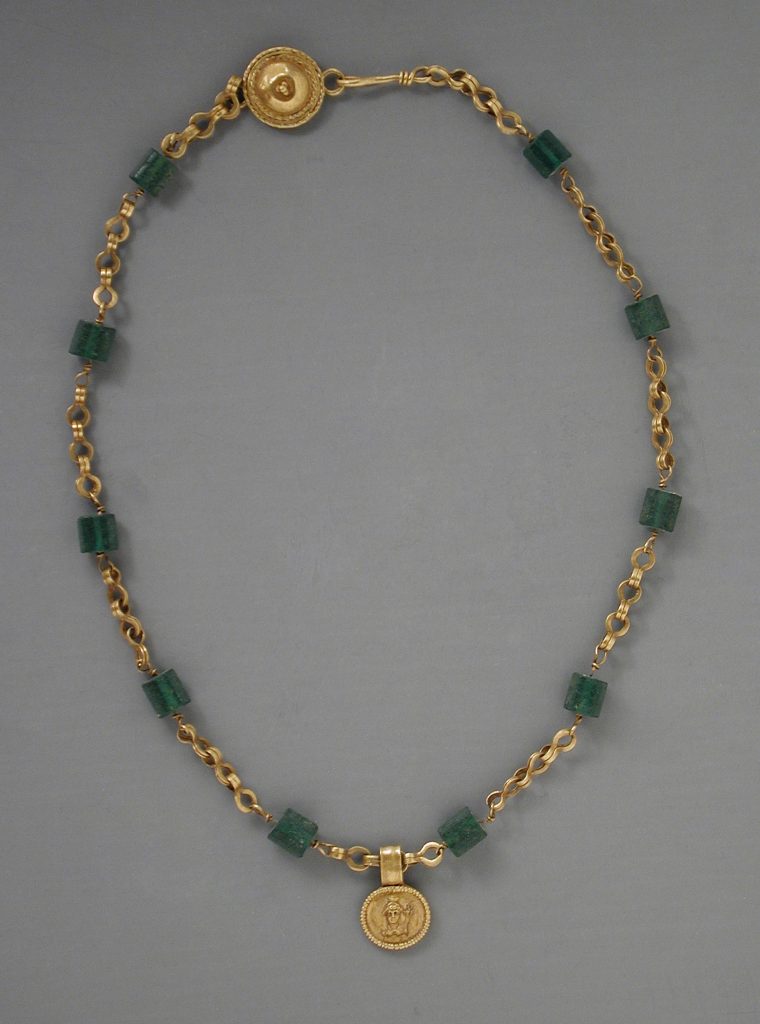
Gold necklace with a medallion depicting a goddess, 30 BCE to 300 CE, Los Angeles County Museum of Art, Los Angeles, CA, USA.
Throughout the 30 centuries of ancient Egyptian civilization, there was a common appreciation of jewelry among both men and women of all classes in the Egyptian community. Most Egyptians wore some form of jewelry and were also buried with their ornaments for the afterlife. Jewelry such as necklaces, neck collars, rings, bracelets, amulets, and diadems was fashioned in a variety of materials, depending on the wealth and status of the wearer.
Predynastic Egyptians discovered the malleability of gold and its resistance to tarnishing. These properties, combined with its natural radiance, made it a sought-after material in the use of ornaments that signified the elite status of its owner. The popularity of gold jewelry flourished throughout Egypt’s long history as evidenced by the staggering volume of gold ornaments that have been unearthed in archeological excavations.
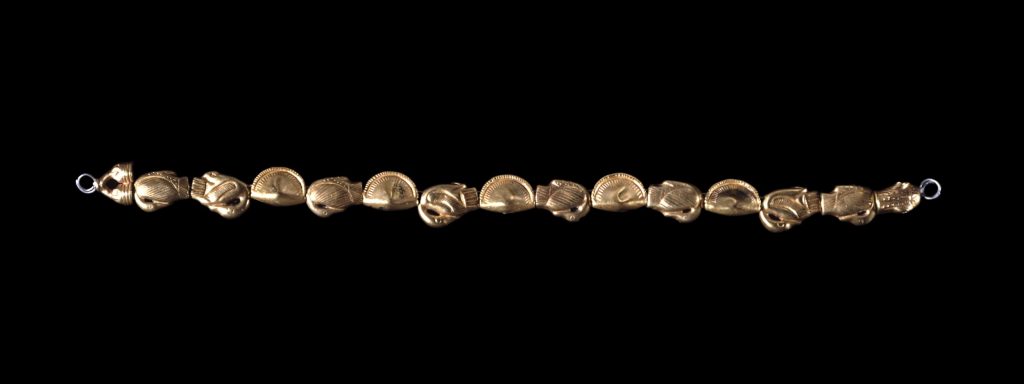
Gold amulet, ca. 1650 BCE to 1550 BCE, British Museum, London, UK.
Most of the gold used in ancient Egypt was obtained from the Eastern Desert region, the mountainous area between the Nile and the Red Sea, with some mines located as far as 800 miles south of Cairo. According to available records, there were at least 1300 active mines in antiquity and a complex enterprise of gold production and goldsmithing proliferated on the banks of the Nile. Tributes and conquests from abroad also filled the ancient Egyptian coffers with gold. Nubia, located in present-day Sudan, was believed to be a notable source.
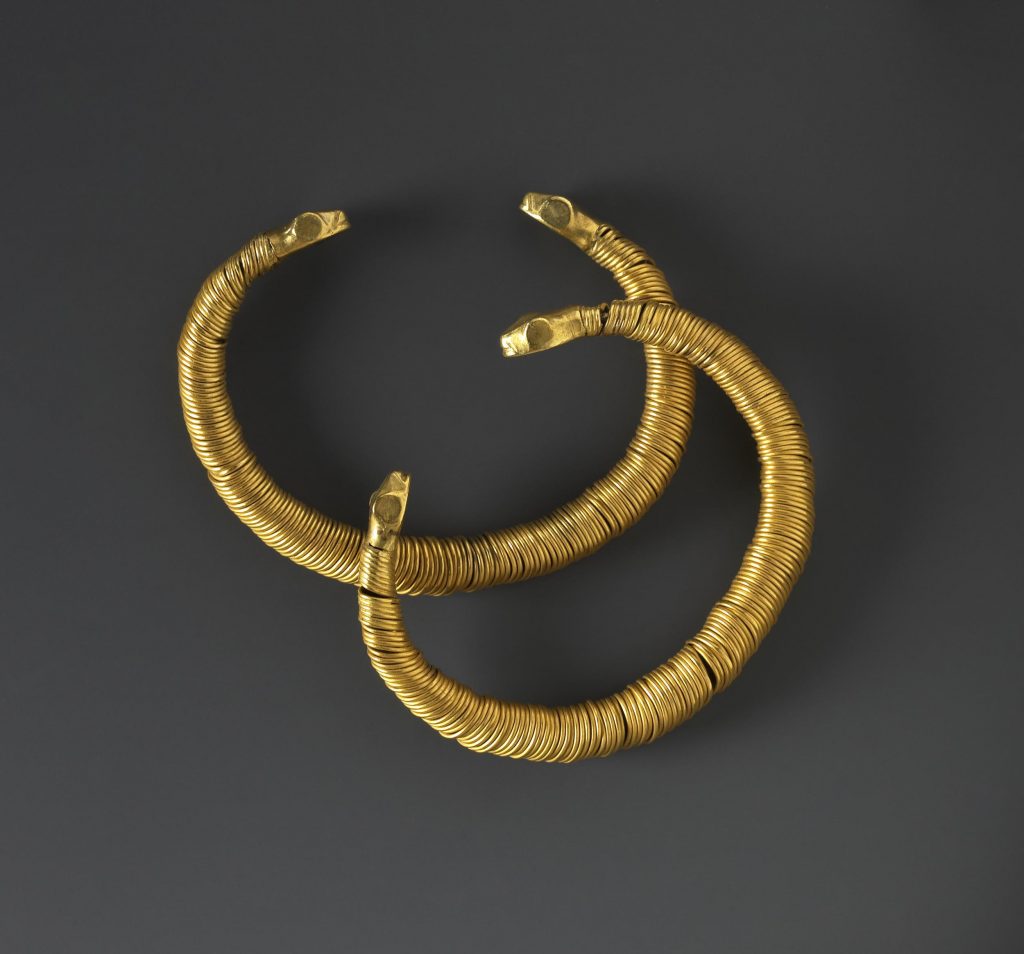
Pair of gold bracelets with snake-headed terminals at the ends, ca. 1550 BCE to 1069 BCE, British Museum, London, UK.
Nebu was an Egyptian symbol for gold and the hieroglyph was depicted by a golden collar with ends hanging off the sides and seven spines dangling from the middle. The references to gold were present in the writings of the First Dynasty between 2925 to 2775 BCE, however, the Predynastic Egyptians were already mining gold between 4000 BCE to 3001 BCE (in the time before a written language had been established). Although Egypt was rich in gold, its extraction wasn’t an unremarkable feat given the rudimentary tools at the disposal of ancient Egyptians.
Gold mining and metallurgy were established into an elaborate system over time, and ancient Egyptians established the foundations still employed in modern metalsmithing. By the time of the New Kingdom, the vast gold-mining enterprise was under royal command and monopoly and was run by a workforce comprising convicts and slaves. It was a difficult and dangerous job and the work conditions were treacherous and frequently fatal.
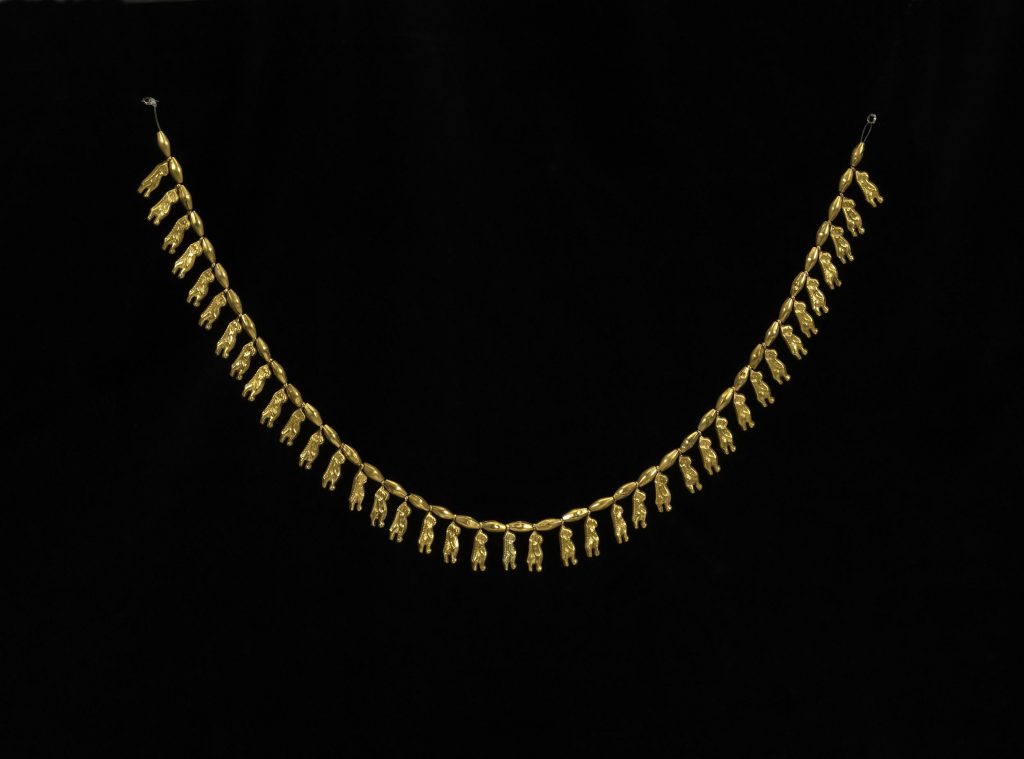
Gold necklace of Taweret amulets, 1550/1549 BCE to 1292 BCE, British Museum, London, UK.
Goldsmiths hammered raw gold into sheets and used a variety of techniques to create finished products. Techniques were developed locally or borrowed from foreign cultures to turn this coveted metal into luxurious jewelry. Precious stones or glass were embedded into gold to create sophisticated designs, and gold was also inlaid or soldered into other types of jewelry or items to enhance them.
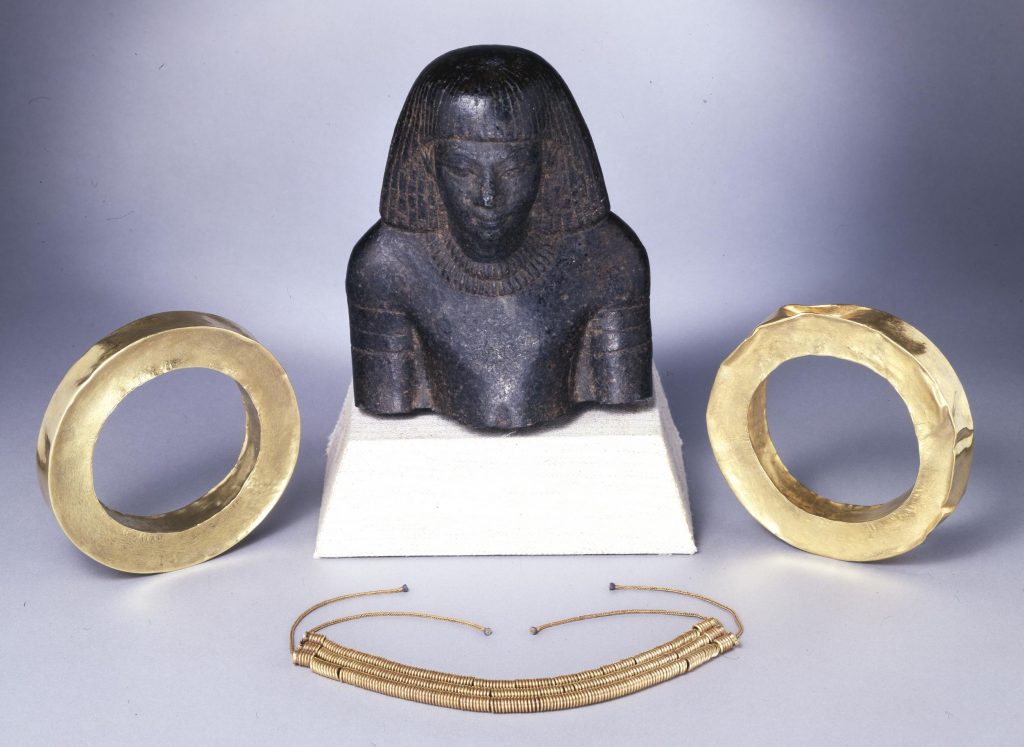
Gold bangle and miniature gold collar with miniature granite torso, ca. 1550 BCE to 1292 BCE, British Museum, London, UK.
Ancient Egyptians remained undeterred by the lack of purity of gold, as most relics including jewelry contained silver in some or significant amounts. Electrum, a naturally occurring gold-silver alloy that contains between 20 and 80 percent gold, was a valued material. Egyptian goldsmiths manipulated the natural “taint” of Electrum caused by the uneven tarnishing of the gold and silver components to imbibe artful red imperfections in finished products.
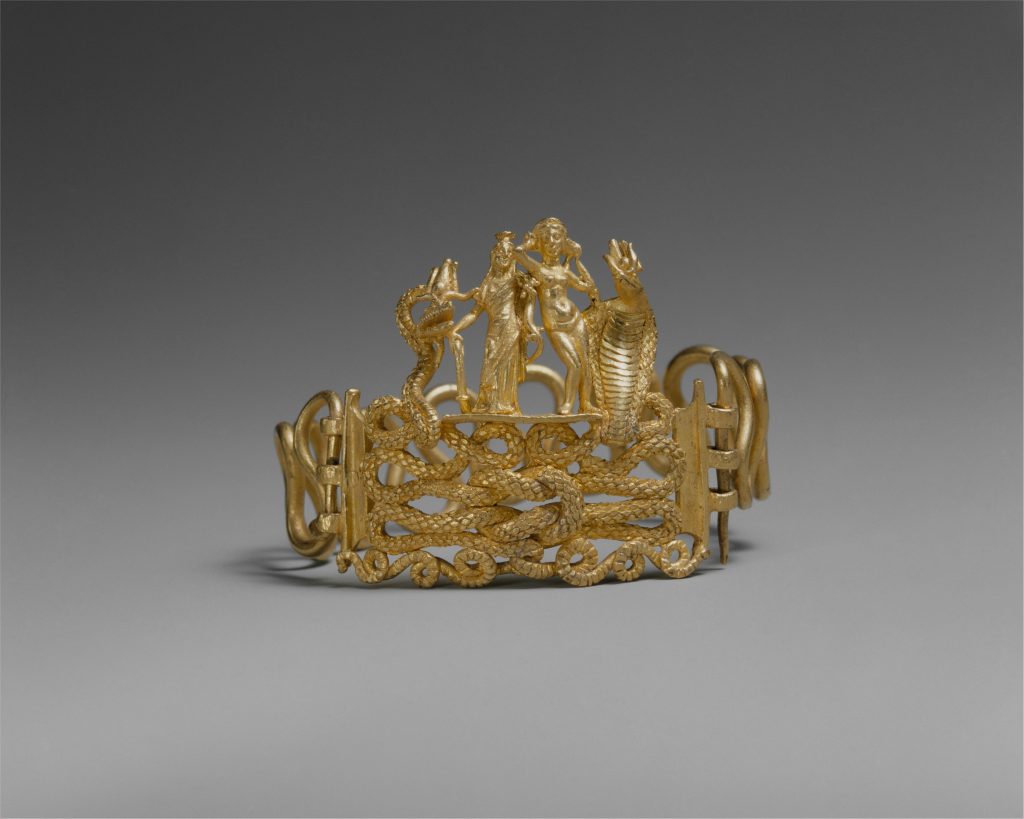
Bracelet with Agathodaimon, Isis-Tyche, Aphrodite, and Thermouthis, ca. 100 BCE to 100 CE, Metropolitan Museum of Art, New York, NY, USA.
For ancient Egyptians, gold had religious connotations as it was believed to be a divine metal and the flesh of the sun god, Ra. Initially, the use of gold was reserved for kings and royals, however, it was expanded to priests and nobles over time. Archeological excavations revealed an unfathomable amount of personal ornaments, allowing a small glimpse into the riches of ancient Egyptian society.
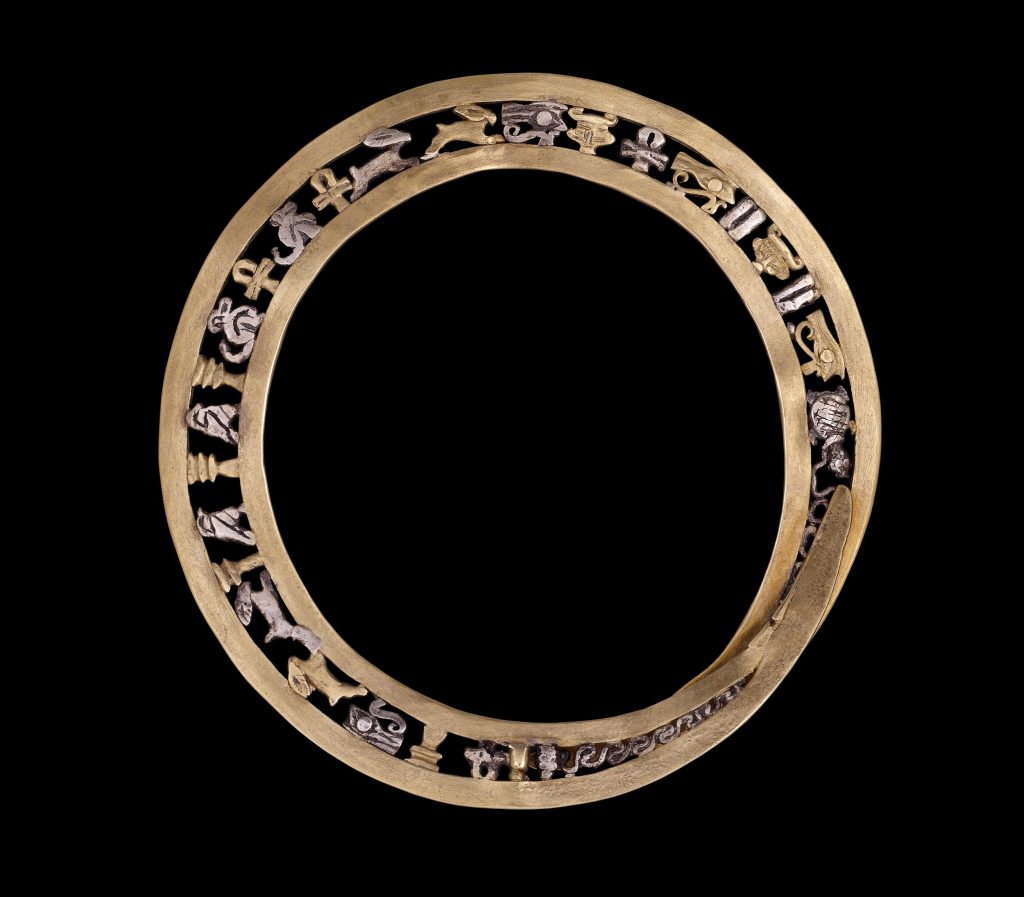
Gold and silver flat openwork bangle with inset animal and amulet figures, ca. 2055 BCE to 1650 BCE, British Museum, London, UK.
100 years ago, in 1922, Howard Carter exhumed the relatively intact tomb of Tutankhamun in a discovery that not just mesmerized academia but captivated the whole world. Perhaps the most remarkable feature of his discovery was the vast wealth and riches that accompanied Tutankhamun to the afterlife, as he was a relatively insignificant king. Burials of pharaohs that were more significant likely contained a wealth of unfathomable proportions that unfortunately succumbed to the looting that had already become rampant in antiquity. There are relatively minimal artifacts remaining from the Early Dynastic periods.
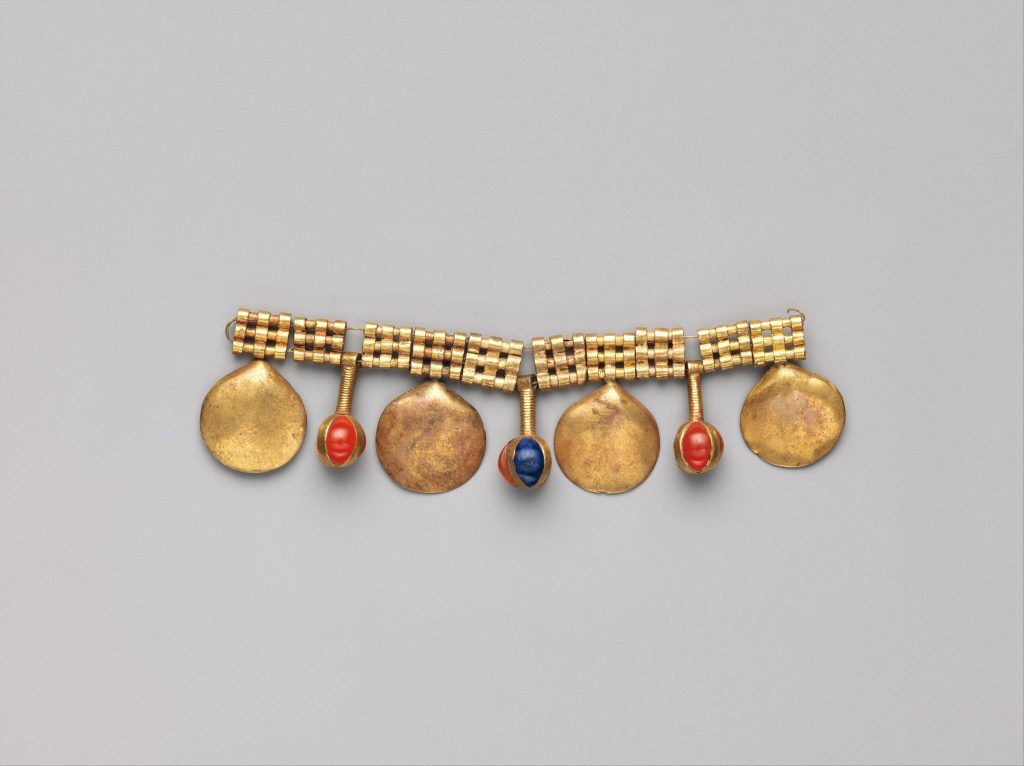
A gold broad collar of Nefer amulets, ca. 1504 BCE to 1450 BCE, Metropolitan Museum of Art, New York, NY, USA.
Despite the tragic looting of excavation sites that has continued to contemporary times, there still remains a notable legacy of gold jewelry from ancient Egypt displayed in museum collections all over the world that provides a brief glimpse into the unfathomable wealth and sophistication of the world’s most popular ancient civilization.
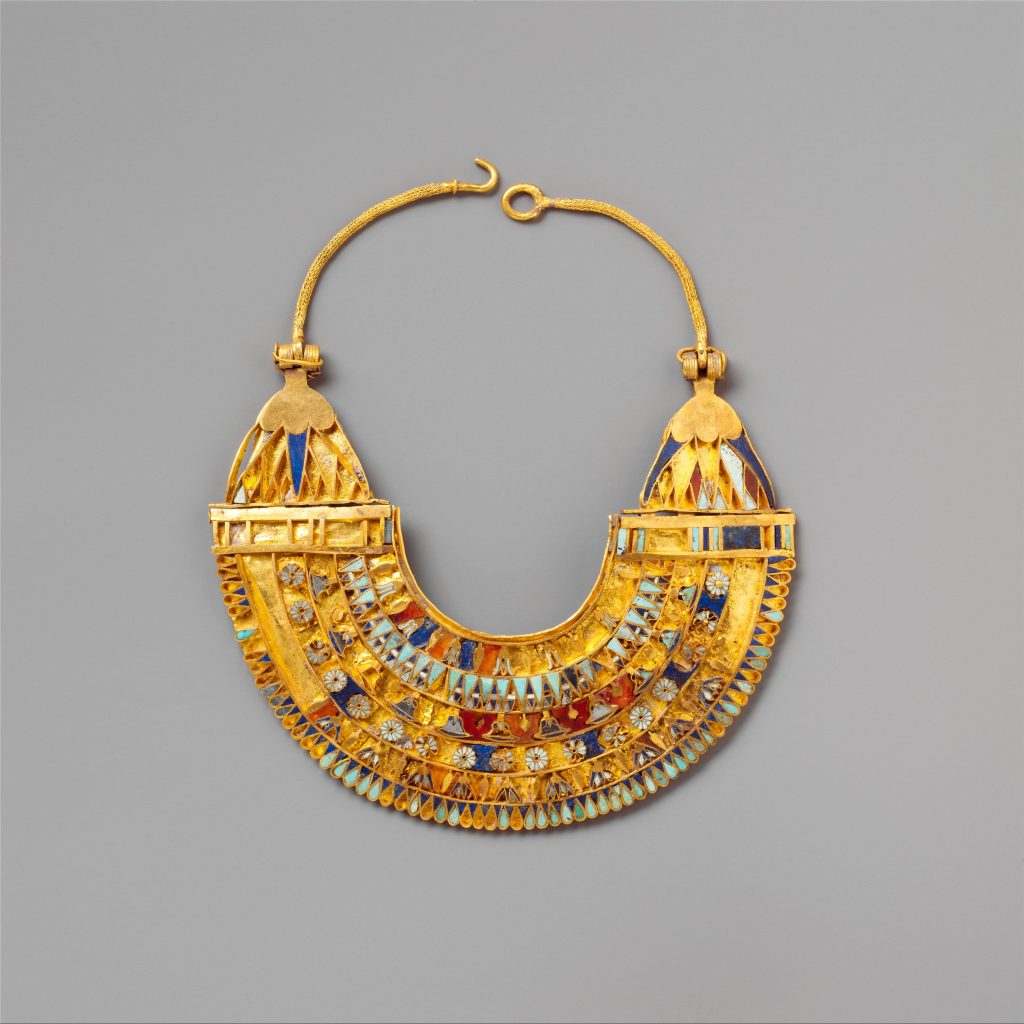
Miniature broad collar in gold, carnelian, turquoise, and lapis lazuli ca. 332 BCE to 246 BCE, Metropolitan Museum of Art, New York, NY, USA.
Heilbrunn Timeline of Art History. New York: The Metropolitan Museum of Art, 2000–, January 2017.
Jon Mann. A Brief History of Gold in Art, from Ancient Egyptian Burial Masks to Jeff Koons, October 19, 2017.
T. G. H. James, Gold Technology in Ancient Egypt. Mastery of Metal Working Methods. The British Museum, London. Accessed on November 4, 2022.
DailyArt Magazine needs your support. Every contribution, however big or small, is very valuable for our future. Thanks to it, we will be able to sustain and grow the Magazine. Thank you for your help!